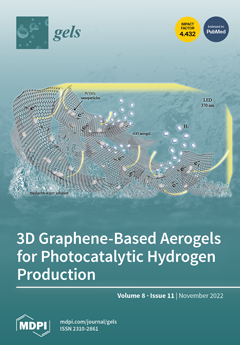Background: Angiogenesis is a crucial process in physiological maintenance and tissue regeneration. To understand the contribution of angiogenesis, it is essential to replicate this process in an environment that reproduces the biochemical and physical properties which are largely governed by the extracellular matrix
[...] Read more.
Background: Angiogenesis is a crucial process in physiological maintenance and tissue regeneration. To understand the contribution of angiogenesis, it is essential to replicate this process in an environment that reproduces the biochemical and physical properties which are largely governed by the extracellular matrix (ECM). We investigated vascularization in cardiac left ventricular ECM hydrogels to mimic post-myocardial repair. We set out to assess and compare different destructive and non-destructive methods, optical as well as non-optical, to visualize angiogenesis and associated matrix remodeling in myocardial ECM hydrogels.
Methods: A total of 100,000, 300,000, and 600,000 Human Pulmonary Microvascular Endothelial Cells (HPMEC) were seeded in left ventricular cardiac ECM hydrogel in 48-well plates. After 1, 7, and 14 days of culture, the HPMEC were imaged by inverted fluorescence microscopy and 3D confocal laser scanning microscopy (Zeiss Cell Discoverer 7). In addition, cell-seeded ECM hydrogels were scanned by optical coherence tomography (OCT). Fixed and paraffin-embedded gels were thin-sectioned and assessed for ECM components via H&E, picrosirius red histochemical staining, and immunostaining for collagen type I. ImageJ-based densitometry was used to quantify vascular-like networks and GraphPad was used for statistical analyses.
Results: Qualitative analyses were realized through fluoromicrographs obtained by the confocal laser scanning microscope which allowed us to visualize the extensive vascular-like networks that readily appeared at all seeding densities. Quantification of networks was only possible using fluoromicrographs from inverted microscopy. These showed that, after three days, the number of master junctions was seeding density-dependent. The resolution of optical coherence tomography was too low to distinguish between signals caused by the ECM and cells or networks, yet it did show that gels, irrespective of cells, were heterogeneous. Interestingly, (immuno)histochemistry could clearly distinguish between the cast cardiac-derived matrix and newly deposited ECM in the hydrogels. The H&E staining corroborated the presence of vascular-like network structures, albeit that sectioning inevitably led to the loss of 3D structure.
Conclusions: Except for OCT, all methods had complementary merit and generated qualitative and quantitative data that allowed us to understand vascular network formation in organ-derived ECM hydrogels.
Full article






